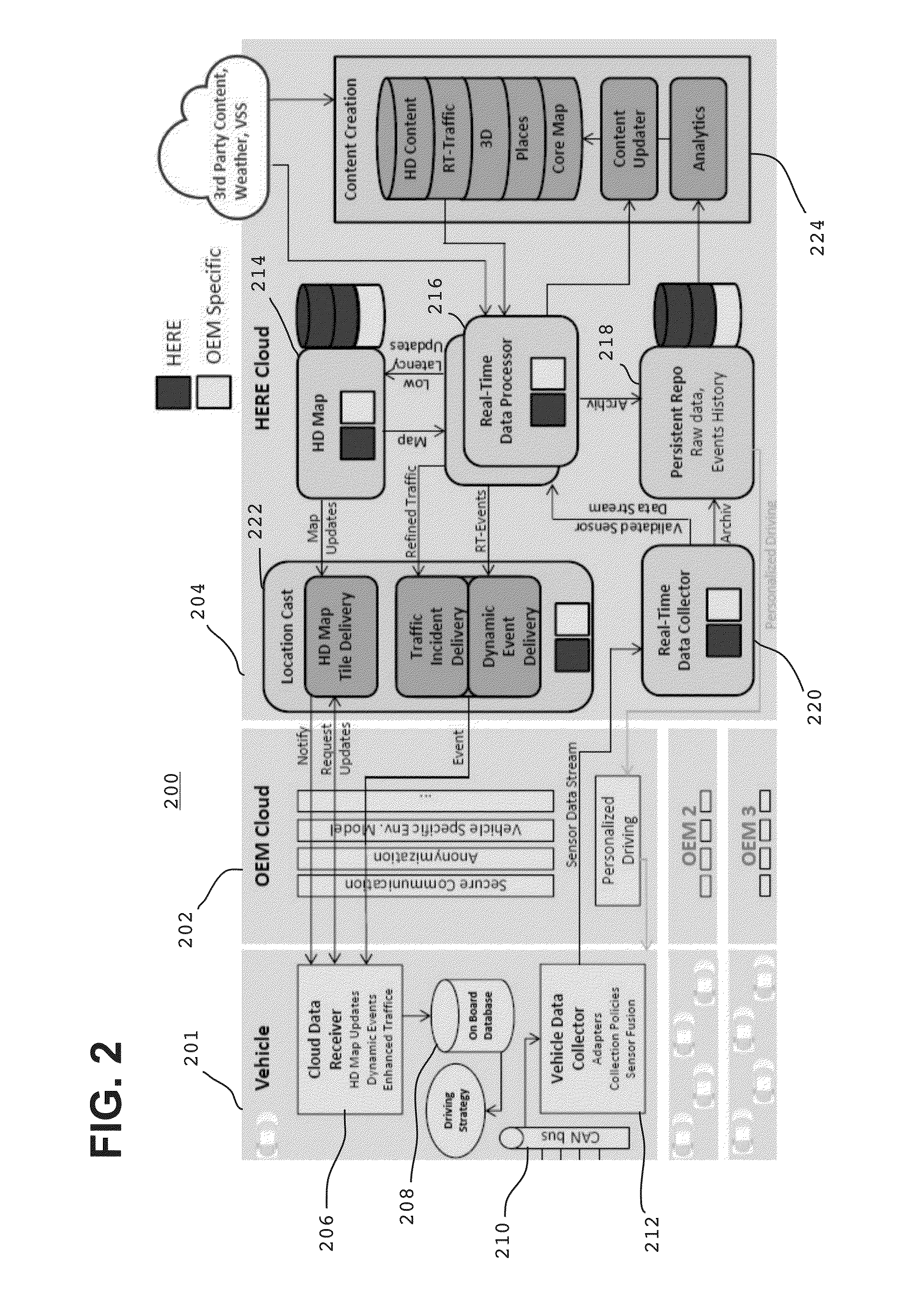Highly Assisted Driving Platform
a technology of high-assist driving and platform, which is applied in the direction of traffic control system, transportation and packaging, instruments, etc., can solve the problems of straining the vehicle's resources, unable to seamlessly integrate the various had applications in the vehicle, and affecting the service life of the vehicl
- Summary
- Abstract
- Description
- Claims
- Application Information
AI Technical Summary
Benefits of technology
Problems solved by technology
Method used
Image
Examples
Embodiment Construction
[0014]A generic framework or platform configured to support a plurality of HAD applications has been discovered and is described herein. In accordance with the present teachings, these HAD applications may be created, executed, modified, integrated, and / or the like in a vehicle. In some embodiments, as further described herein, an architecture in accordance with the present teachings may be used to support HAD applications including but not limited to collision avoidance, early warning systems, autonomous driving, personalized autonomous driving, cruise control, lane change warning systems, an automobile app store, telematics sensor analytics, and / or the like, and combinations thereof. In some embodiments, an architecture in accordance with the present teachings is cloud-based.
[0015]In addition to being configured to support a plurality of HAD applications, an architecture in accordance with the present teachings may, in some embodiments, be further configured to achieve one or more...
PUM
 Login to View More
Login to View More Abstract
Description
Claims
Application Information
 Login to View More
Login to View More - R&D
- Intellectual Property
- Life Sciences
- Materials
- Tech Scout
- Unparalleled Data Quality
- Higher Quality Content
- 60% Fewer Hallucinations
Browse by: Latest US Patents, China's latest patents, Technical Efficacy Thesaurus, Application Domain, Technology Topic, Popular Technical Reports.
© 2025 PatSnap. All rights reserved.Legal|Privacy policy|Modern Slavery Act Transparency Statement|Sitemap|About US| Contact US: help@patsnap.com



